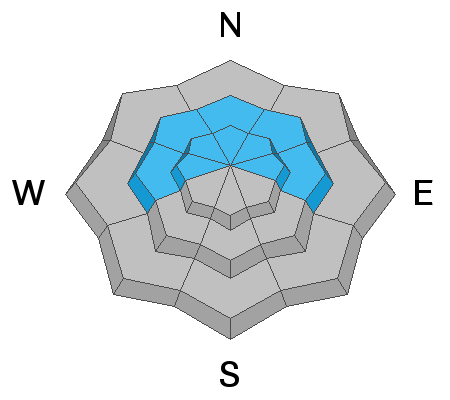A few more inches trickled in during "shallow instability" in a northwest flow on Friday. This brings totals since Monday up to 15 inches at my storm board in Spring City Canyon. This was a "slow loading event" where the snow stacked up slowly rather than coming in within a short period of time. This is good for stability. There have not been any real long periods of strong wind during the week which is also good for stability. There was some wind from the east on Thursday which did strip some snow on the upper east facing ridges. Temperatures have remained quite cold.
Overall, the snowpack has been going in a good direction with good consolidation and bonding of the old deeper weak sugary layers that have caused avalanches over the last month.
Looking ahead, we'll see a real nice day today with slightly warmer temperatures and mostly clear skies. Northwest wind will be moderate in speed along the ridgetops, perhaps strong enough to drift a little snow. We'll be in a gradual warming trend through mid week with some periods of clouds and moderate speed wind. With no real strong wind and no rapidly warming temperatures, the snowpack should be quite happy and continue to stabilize.
The most recent significant avalanche was a large natural avalanche in Huntington Canyon on Monday night.
DETAILS HERE. This was in a shallow location in the mid elevation band where the snowpack was shallow and was holding very weak snow near the ground. Explosive testing on Friday in adjacent avalanche paths did not trigger any additional avalanches. This was a little surprising knowing how weak the snowpack structure is. However, what this does demonstrate to me is that if explosives won't trigger an avalanche in areas with some of the weakest snow on the Skyline, the deeper areas with a much stronger snowpack in the higher elevations where many people ski and ride sleds are even less likely to see avalanches right now.











